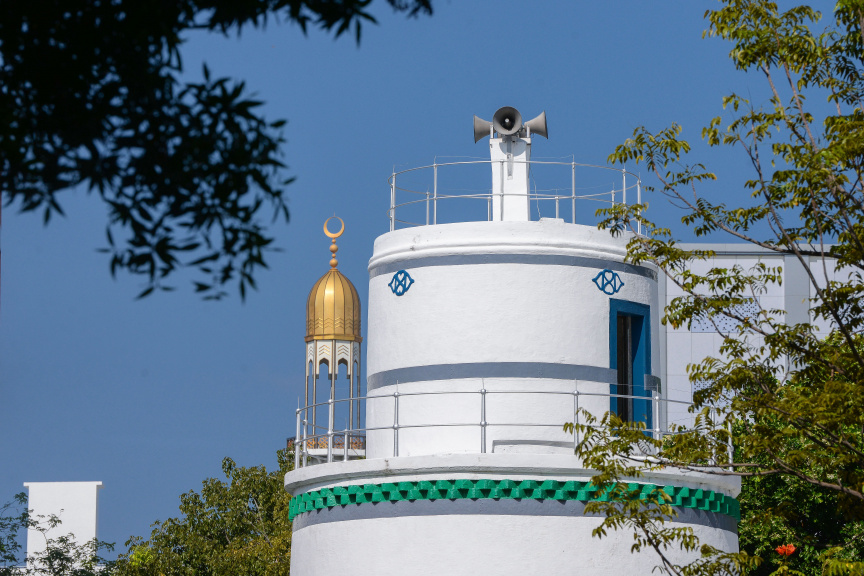The Maldivian capital of Malé City is dotted with famous landmarks, from iconic historical and modern spots, to important state institutions. Among the adjacently-placed high-rise buildings that have taken over the façade of the island, is the "old city" of Malé; where the old royal palace complex of the Sultanate era once existed.
Less than a minute's walk inland is needed to notice one of the most important ancient icons of the island. Situated right in front of the Official Residence of the President, Mulee Aage, is a white cylindrical tower, referred locally as the Munnaaru or the minaret.
This tower is the minaret of the old Hukuru Miskiy [Friday Mosque] of Malé, listed on the tentative UNESCO World Heritage Site, built in the 17th century.
The Original

Hukuru Miskiy Munnaaru [Friday Mosque's Minaret] was built in 1674, approximately 18 years after the mosque was built, during the reign of Sultan Ibrahim Iskandar the first. According to history researchers, minarets of other mosques back then were shaped quadrilateral, and not too short. But Sultan Iskandar commissioned the Hukuru Miskiy Munnaaru to be erected differently; it would be cylindrical in shape, and greatly inspired by the minarets the Sultan saw in Mecca while on Hajj pilgrimate in 1668.

The Munnaaru was built with coral boulders, and it stood tall at two storeys, and anyone standing on top can view the capital island from end to end, back then. Though Malé today is piled up with tall residences and buildings, the 36 feet and seven-inch tall Munnaaru was the first tall "tower" ever erected on Maldivian soil.
As a finishing touch, the Sultan instructed his people to fasten a strong rope around the Munnaaru in case the structure weakened.

The purpose of this tower was for announcing an unofficial invitation before the official Adhan call for prayer. The invitation goes "As-salat Barakallah Feekum As-salat" [loose translation: Prayer. Allah's blessings unto you. Prayer]. A man was employed as a Muezzin to perform this call five times every day. Eventually, this pre-Adhan call was abolished, and the Muezzin would go up the Munnaaru to perform the Adhan only.

The 20th Century tower
In 1906, Sultan Mohamed Shamsuddin carried out a mass renovation of the then-200-year-old Munnaaru. Under Sultan Shamsuddin, Munnaaru was strengthened with limestone; the fastened ropes were replaced by copper belts, the Arab inscriptions on the Munnaaru were colored blue; and the metal and chain railings were placed on the top of the Munnaaru, bringing it to the present-day look.

In 1964, another wave of modernizing renovation took place at the Hukuru Miskiy complex, and loudspeakers were finally placed on the Munnaaru, allowing the Muezzin to perform Adhan calls five times a day while standing inside the Hukuru Miskiy. The loudspeakers ended the almost 300-year tradition of a Muezzin climbing up the Munnaaru for Adhan.

Modern Munnaaru
Malé now has a high concentration of mosques for its some 150,000 residents--there is a mosque within walking distance from anywhere in the island. Though this may not be possible today due to the high-rise buildings among narrow roads, Mosques used to be noticeable from afar by its minarets. The modern mosques have slim and tall minarets that sound the Adhan to a distance by their powerful loudspeakers. Hearing the melodious Adhan calls at once can be quite an experience--as every Muezzin's voice and melody is different.
But among the busy and never-ending city activities stands the Hukuru Miskiy Munnaaru--the city's ancient skyscraper--almost like it had just been teleported straight from the 17th century. The monument is such an iconic and a defining character of Malé, that it is also the official logo of Malé City.






